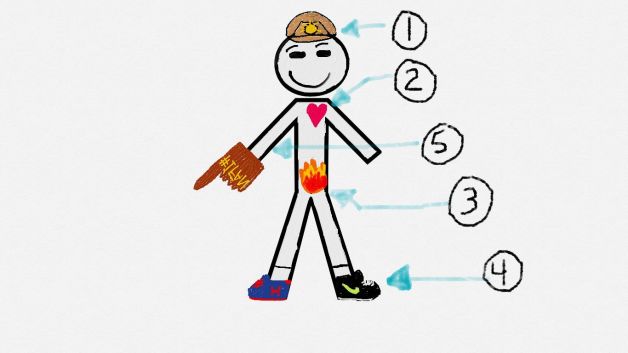Leaders come in different shapes and sizes, different ideologies, religions, backgrounds, and attitudes. Much like how every lamp is different, every leader is different. Everyone is a leader in their own way. No matter what field you are in or what age you are a leader in some aspect. Some will always be better than others but it’s the understanding that everyone has the potential to be great that allows to continually better our own personal leadership style. We are going to look at two people in very different fields and see what leadership style they are most like and why.
 Albert Einstein was a predominant physicist in the first half of the 20th Century. He pioneered modern theoretical physics through his writings on relativity, the photoelectric effect and quantum theory. His findings continue to be taught in today’s physics classes and his name has become synonymous with genius.
Albert Einstein was a predominant physicist in the first half of the 20th Century. He pioneered modern theoretical physics through his writings on relativity, the photoelectric effect and quantum theory. His findings continue to be taught in today’s physics classes and his name has become synonymous with genius.
I believe Albert Einstein is most likely a transformational leader because when he first unveiled his findings regarding the constant speed of light it was hard for scientists to accept. He had to make a change in the scientific community in order for his ideas to be considered so he created and inspiring vision by explaining the world in a different way. He motivated people to buy into and deliver the vision by explaining his findings to other scientists and other interested parties. He managed the delivery of the vision by continuing to do research on his ideas and expand his paper on the special theory of relativity to the general theory of relativity and expand his credibility by publishing more papers. And finally, he built ever-stronger, trust-based relationships with people by joining The Manhattan Project and protecting the people of the Allied forces during WWII and working with The Institute of Advanced Study later in his life.
 Robin Williams was an actor/comedian from the late 70s all the way up to his tragic death this year in 2014. He performed stand-up comedy, and appeared in theatre, film,and television. He won the Academy Award for best supporting actor in 1997’s ‘Good Will Hunting’. Even in death he continues to be my favorite actor and comedian.
Robin Williams was an actor/comedian from the late 70s all the way up to his tragic death this year in 2014. He performed stand-up comedy, and appeared in theatre, film,and television. He won the Academy Award for best supporting actor in 1997’s ‘Good Will Hunting’. Even in death he continues to be my favorite actor and comedian.
I believe that Robin Williams is most likely a servant leader because of how he built people up throughout his career. Robin started his career in improvisational theater which teaches actors to support others ideas and create a scene using every bit of information that every actor creates. Robin was one of the best improvisers and I feel it is because he didn’t just support people on stage and on screen, but because he also was extremely supportive in his off-screen life. Robin empowered everyone he came into contact with whether it was the attitude he had on set or through his charitable work, doing stand up for the troops or raising money through Comic Relief. As an actor /comedian Robin was constantly bettering himself and the community around him. He played serious roles such as in Good Will Hunting, and Dead Poets Society and funnier roles such as in Mrs. Doubtfire and as the genie in Aladdin. He was constantly trying to make himself better at his craft. I believe that Robin Williams was the epitome of Picasso’s quote “The meaning of life is to find your gift. The purpose of life is to give it away.” Robin was always willing to give away his gift he made appearances everywhere the TV show Friends, Whose Line is it Anyway?, he gave and impromptu ted talk. This man had a purpose and that was to give away his gift to the world.
Miles




